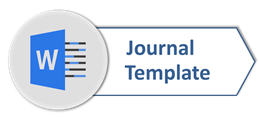Error Analysis on Learners’ Interlanguage and Intralanguage: A Case Study of Two Adolescent Students
Abstract
This research focuses on exploring learners’ language, especially the errors that are performed by the English learners. The subjects of this study are two adolescent students who have been learning English since early age. The data analyzed is collected by doing the interview session. Identification and classification are done toward the errors performed by the subjects. After that, the pattern is drawn to find out the subjects’ nature of language. The result shows that both interlanguage and intralanguage affect the students’ English. However, interlanguage affects the errors more than does intralanguage. It proves that the nature of L1 affects the L2 acquisition. The errors occurred in terms of subject-verb agreement, tenses, and relative clause. At the end, the appropriate feedback given to speaking performance is implicit correction such as recast and prompts.
Keywords: Error analysis, feedback, intralanguage, interlanguageFull Text:
PDFReferences
Amara, N. 2015 Errors correction in foreign language teaching. The Online Journal of New Horizons in Education, 5(3), 58 – 68.
Bedmar, M. B. D. 2005. Struggling with English at University level: error patterns and problematic areas of first-year students’ interlanguage. In Proceedings from the Corpus Linguistics Conference. Retrieved from http://www corpus.bham.ac.uk/.
Bennui, P. 2016. A study of L1 intereference in the writing of Thai EFL students. Malaysian Journal of ELT Research, 4(1), 31.
Corder, S. P. 1982. Error analysis and interlanguage. Oxford: Oxford University Press.
Fauziati, E. 2017. Native and target language influence on the students’interlanguage production: a case of Indonesian EFL compositions. Indonesian Journal of Applied Linguistics, 7(1), 54-63.
Hmouma, M. A. A. 2014. Interlanguage Syntax of the Noun Phrase in English: An Error Analysis of Third Year High School Students of English in Zawiya, Libya. IOSR Journal of Humanities and Social Science, 19(5), 36-43.
Keenan, E. and Comrie, B. 1977. Noun phrase accessibility and universal grammar. Linguistic Inquiry, 8, 63 – 99.
Lightbown, P. M., and N. Spada. 2013. How Languages are Learned 4th edition. Oxford University Press
Meisel, J. 1987. Reference to past events and actions in the developmental of natural second language acquisition. In C. Pfaff (ed.), First and second language acquisition processes. Cambridge, MA: Newbury House.
Richard, J.C., and G. P. Sampson. 2015. The study of learner English. In Richards, J. C. Error analysis: Perspectives on second language acquisition (pp. 3-18). London: Routledge.
Richards, J. C. 2015. Error analysis: Perspectives on second language acquisition. London: Routledge.
Scovel, T. 2001. Learning New Languages. Boston: Heinle and Heinle.
Shan-ling, L. I. N. 2012. The application of error analysis in college English teaching. Sino-US English Teaching, 9(5), 1124-1131.
Taher, A. 2011. Error analysis : A study of Swedish junior high school students’ texts and grammar knowledge (Dissertation). Retrieved from http://urn.kb.se/resolve?urn=urn:nbn:se:uu:diva-168388.
Tarone, E. and B. Swierzbin. 2009. Exploring learner language. Oxford: Oxford University Press.
Widianingsih, N. K. A. and Ingatan Gulö. 2016. Grammatical difficulties encountered by second language learners of English. Proceedings of ISELT FBS Universitas Negeri Padang, 4(2), 141-144.
Wu, H. P. and E. V. Garza. 2014. Types and Attributes of English Writing Errors in the EFL Context—A Study of Error Analysis. Journal of Language Teaching & Research, 5(6).
DOI: https://doi.org/10.33365/ts.v17i2.321
Refbacks
- There are currently no refbacks.
Copyright (c) 2019 Dian Puspita

This work is licensed under a Creative Commons Attribution-ShareAlike 4.0 International License.
Teknosastik: Jurnal Bahasa dan Sastra
Publisher: Universitas Teknokrat Indonesia
Address: Zainal Abidin Pagaralam Street 9-11, Bandar Lampung, Indonesia
Website: https://ejurnal.teknokrat.ac.id/index.php/teknosastik/index

Creative Commons Attribution-ShareAlike 4.0 International License






